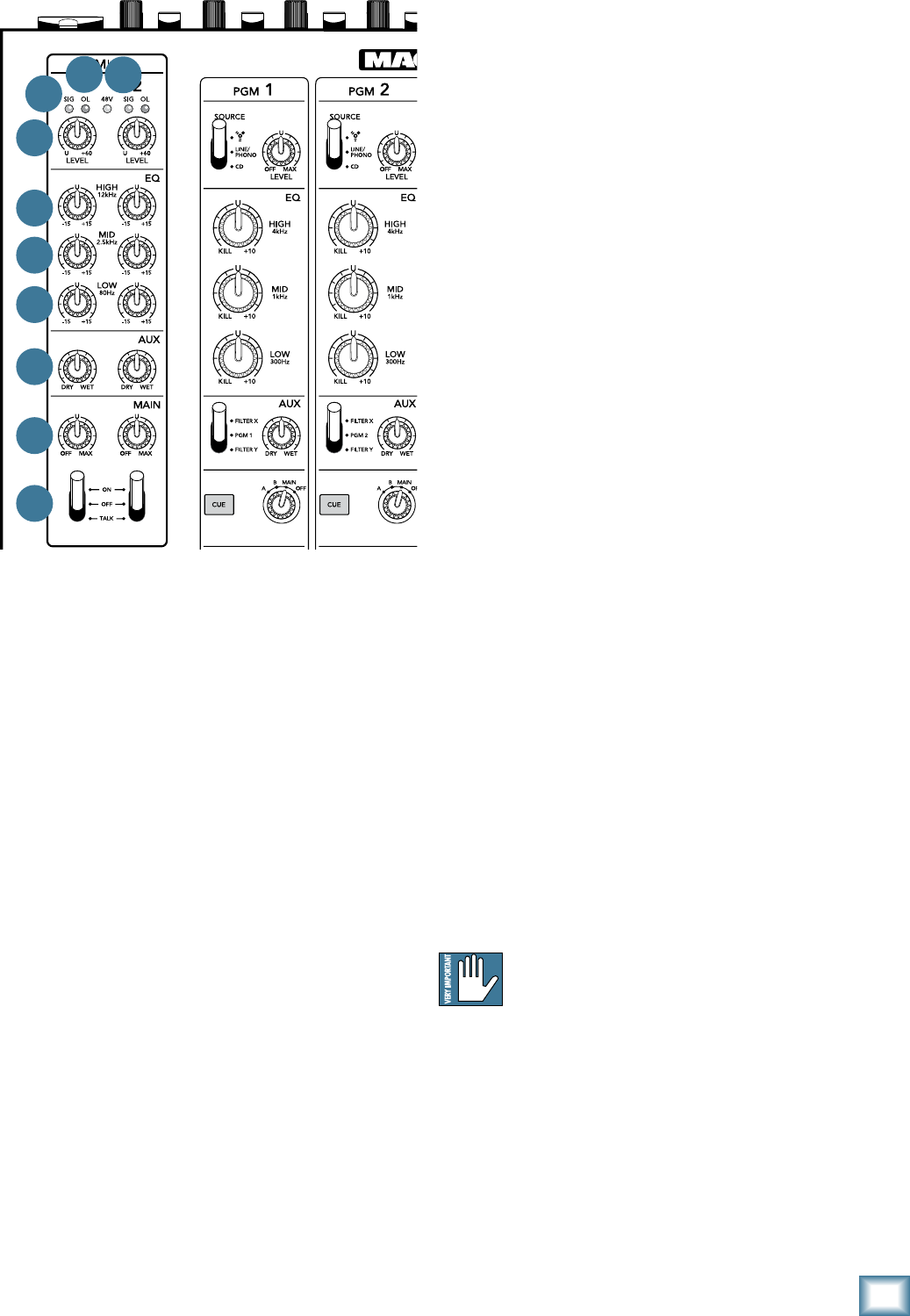
1
Owner’s Manual
Owner’s Manual
Top Panel Features
MIC Input Section
There are two completely independent microphone
preamplifiers, arranged in vertical columns. The left col-
umn controls mic input 1, and the right column controls
mic input 2. Each section contains a most wonderful
Mackie Onyx premium-quality microphone preamplifier.
19. LEVEL
These knobs adjust the gain of the mic preamps for
any mics plugged into the mic [1] input jacks. The gain
is adjustable from 0 (unity gain) up to +60 dB of gain.
Adjust the knobs so that the loudest speaking or shout-
ing into the microphone just barely lights the OL LEDs
[21]. This gives the best signal-to-noise ratio for the
microphone preamp.
0. SIG LEDs
These LEDs act as signal present indicators. They
light when the microphone signals reach –20 dBu, to
give you a clue that the microphones are working.
1. OL LEDs
These light when the microphone signals reach 3 dB
below clipping. It’s okay if they blink occasionally, but
if they are blinking frequently or are lit continuously,
turn down the level [19] controls until they just blink
occasionally.
. 48V LED
This LED illuminates when the rear panel 48V phan-
tom power [2] button is pressed in, and 48V phantom
power is applied to the mic XLR inputs.
. HIGH EQ
These knobs give your mic signals up to 15 dB of boost
and cut, at 12 kHz and above. At the center position
U (unity gain), there is no effect on the signal. (If all
three EQ controls are set to minimum, the mic signals
are attenuated –15 dB across the audio range.)
4. MID EQ
These knobs give your mic signals up to 15 dB of boost
and cut, at 2.5 kHz, with no effect at position U.
5. LOW EQ
These knobs give your mic signals up to 15 dB of boost
and cut, at 80 Hz and below, with no effect at position U.
. AUX
These knobs allow you to adjust how much of the mi-
crophone signal goes onto the aux bus (wet), and how
much goes to the main mix (dry).
Wet: Mic signals only go onto the aux bus.
Dry: Mic signals only go onto the main mix bus.
Middle position: Mic signals are split evenly between
the aux and main mix.
“Wet” is a term used for signals that have passed
through an audio processor, such as an external
valvezilla-warmulator 2000. “Dry” is a term used for
signals thankfully not passed through such a processor.
So this control lets you finely adjust the amount of vocal
loveliness available for external processing, and how
much is available unprocessed for the main mix.
Note: Always set these controls to dry if you
do not want to add mics to the aux loop for ex-
ternal processing. Otherwise your mic signals
to the main mix will be attenuated.
This control does not affect the mic direct FireWire
outputs to your computer.
7. MAIN
These knobs allow you to adjust how much of the mi-
crophone signal goes onto the main mix bus. It also af-
fects the mic signals reaching the aux bus and FireWire.
CUE CUE CUE CUE
19
20
21
23
24
25
26
27
28
22


















